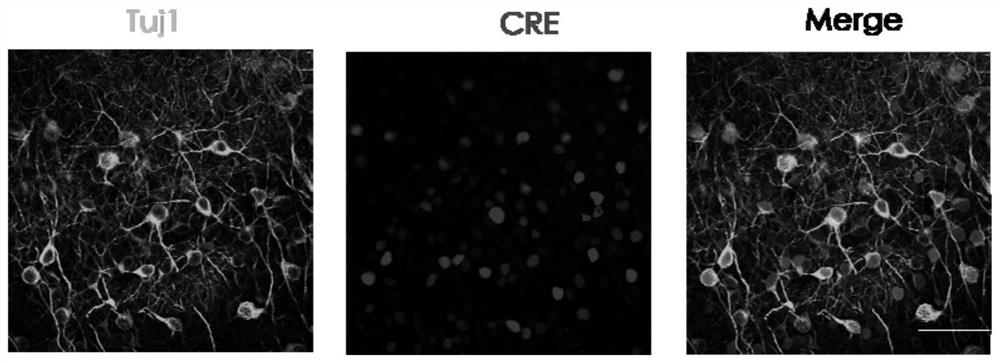Application of knocking-down ARID1A in inhibition of retinal ganglion cell apoptosis after injury
A technology of apoptosis and optic nerve injury, applied in the field of biomedicine, can solve problems such as hindering the survival of CNS neurons
- Summary
- Abstract
- Description
- Claims
- Application Information
AI Technical Summary
Problems solved by technology
Method used
Image
Examples
Embodiment 1
[0040] Example 1. ARID1A gene is a gene intervention target to promote the survival of retinal ganglion cells after optic nerve injury
[0041] This example provides a gene intervention target that can promote the survival of retinal ganglion cells after optic nerve injury. Arid1a Fl / Fl Mice are used as models, and the ARID1A gene in RGCs is specifically knocked out using the cre-Loxp system and AAV-Cre virus eye-point injection technology. The steps are as follows:
[0042] 1. Preparation of virus
[0043] The virus used to knock out the ARID1A gene in RGCs was AAV-Cre virus, and AAV-GFP virus was used as a control. AAV-Cre virus and AAV-GFP virus are products of Shandong Weizhen Company, both of which are recorded in the literature (Kevin KyungsukPark et al., Promoting Axon Regeneration in the Adult CNS by Modulation of the PTEN / mTOR Pathway, SCIENCE VOL 322 7NOVEMBER 2008).
[0044] 2. Detection of the effect of knockout of ARID1A gene on RGC
[0045] (1) Determination ...
PUM
 Login to View More
Login to View More Abstract
Description
Claims
Application Information
 Login to View More
Login to View More - R&D
- Intellectual Property
- Life Sciences
- Materials
- Tech Scout
- Unparalleled Data Quality
- Higher Quality Content
- 60% Fewer Hallucinations
Browse by: Latest US Patents, China's latest patents, Technical Efficacy Thesaurus, Application Domain, Technology Topic, Popular Technical Reports.
© 2025 PatSnap. All rights reserved.Legal|Privacy policy|Modern Slavery Act Transparency Statement|Sitemap|About US| Contact US: help@patsnap.com



